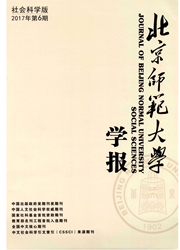

 中文摘要:
中文摘要:
从消极就业政策到积极就业政策的转变,标志着中国政府以更为积极的姿态来处理就业问题。估算结果表明,1998-2008年,我国政府为落实就业政策累计支出6169.67亿元,其中用于落实消极就业政策的支出为4144.06亿元,落实积极就业政策的支出为2025.61亿元。实证分析发现,落实积极就业政策的支出和落实消极就业政策的支出与下岗失业人员的再就业之间存在长期稳定关系,落实积极就业政策的支出每变动1%会导致下岗失业人员的再就业数量同向变动0.27%,说明我国政府用于促进就业的支出的确对再就业工作显示出了积极作用;而落实消极就业政策的支出每变动1%将引起下岗失业人员的再就业数量反向变动1.05%,这一结果表明落实消极就业政策的支出吸引了更多的失业下岗人员加入失业保险体系,同时发挥出了一种"社会稳定器"的功能。
 英文摘要:
英文摘要:
The shift from passive labor market policies(PLMPs)to active labor market policies(ALMPs)marks a more active stance of the Chinese government toward the problem of employment.Our estimation results show that the Chinese government's accumulative expenditure on employment policy implementation from 1998 to 2008 was 616.967 billion renminbi yuan,with 414.406 billion on passive labor market policy implementation,and 202.561 billion on active labor market policy implementation respectively.It is found that there exists a long-term stable relationship between the expenditure on the implementation and reemployment of laid-off workers:the 1% change of expenditure on the active results in 0.27% change of laid-off workers reemployment,implying that the expenditure aimed at promoting employment indeed had a positive effectt;while the 1% change of expenditure on the passive results in 1.05% change of laid-off workers reemployment,suggesting that the expenditure on the passive sent more laid-off workers into unemployment insurance system,which acts as a "social stabilizer".
 同期刊论文项目
同期刊论文项目
 同项目期刊论文
同项目期刊论文
 期刊信息
期刊信息
